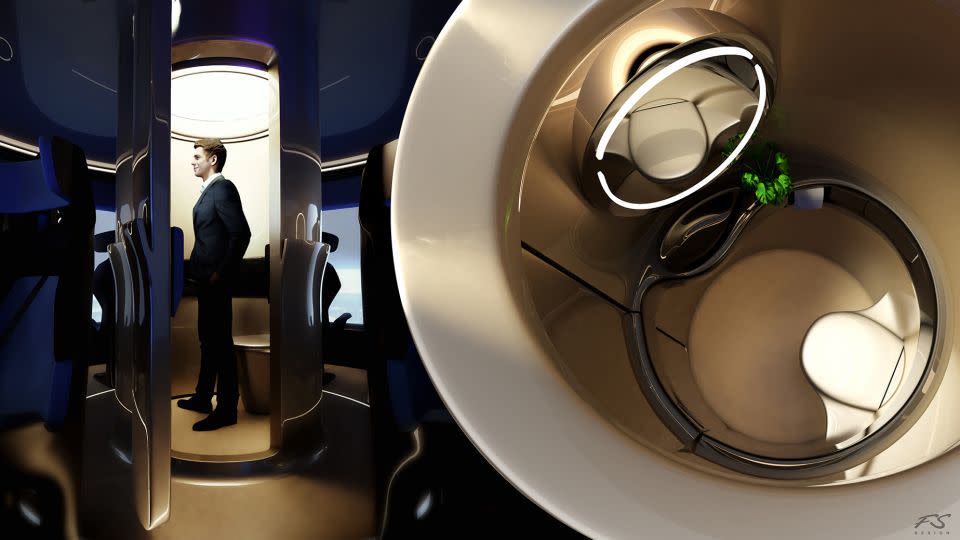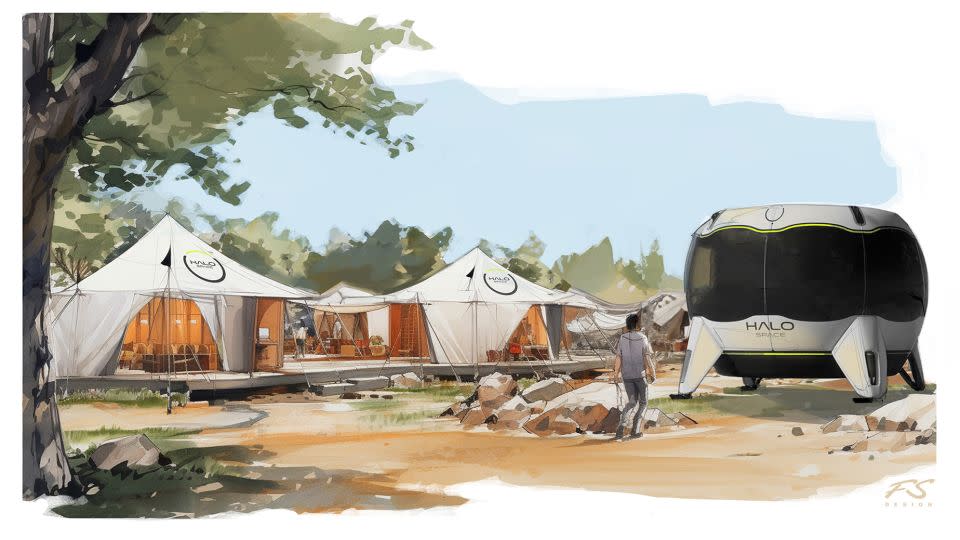What’s the cheapest way to reach near-space? Ride a balloon
The first human to experience what’s now known as the “overview effect” was Soviet astronaut Yuri Gagarin, who became the first person to view our planet from space a little over 63 years ago.
Seeing that curvature for the first time, he exclaimed, “I see Earth! It is so beautiful!” He was the first of many astronauts to report feeling a cognitive shift about one’s place in the universe – a phenomenal sense of transcendental awe.
There are three types of space tourism companies now vying to open up this experience to the wealthy, the superwealthy and the out-of-this-world wealthy.
At the top of the heap, there’s Elon Musk’s SpaceX. For those with tens of millions to spare, it promises rocket ship journeys into orbit, into the weightless wonder more than 300 kilometers (185 miles) above Earth.
Then there’s suborbital experiences, offered by the likes of Jeff Bezos’ Blue Origin and Richard Branson’s Virgin Galactic. The price tag for that is up to $450,000 and takes you up to 80 to 120 kilometers to experience some zero gravity.
The Kármán line, 100 kilometers above sea level, is the altitude internationally recognized as the boundary between Earth and space.
Finally, there’s near-space adventures, where companies such as Space Perspective, World View and now Spanish startup HALO Space are hoping to bring passengers up on balloon flights some 25 to 40 kilometers above Earth for the relatively bargain price range of $50,000 to $200,000.
Commercial flights in 2026

Last week in London, HALO Space CEO Carlos Mira unveiled the interior design for its Aurora space capsule, which his team hopes will transport 10,000 passengers to near-space by 2030.
The pressurized capsule – designed by the legendary Frank Stephenson, the automobile designer for Ferrari, Alpha Romeo and more – measures 5 meters (16.5 feet) wide and 3.5 meters (11.5 feet) tall and will be suspended from a huge helium balloon. Eight passengers will be seated inside for journeys lasting up to six hours.
HALO Space declared at the presentation that it’s offering “new, safe and zero-emissions alternatives to space flights,” and having already completed five successful test flights, that it’s the most advanced company in its sector.
Founded in just 2021, it has the ambitious goal of beginning to offer commercial flights in 2026, starting at $164,000 a pop.
Mira explained that his team was able to hit the ground running by “using mature technologies” and not trying to reinvent the wheel.
“The operational model we have is not building everything in-house,” he said. “The approach we have taken is to partner with the best aerospace players in the different domains,” including CT Engineering Group, Aciturri, GMV and TIFR.
Introducing the modern, lightweight capsule design, Stephenson said, “It’s one thing to design a beautiful interior; it’s another thing to make it work.” There are “weight targets, safety targets, ergonomic targets” to meet, but his aim was to create “something that you feel comfortable with right from the beginning.”
A very special sunrise

The end consumers, after all, are well-heeled adventurers who no doubt fly first-class day-to-day and are used to luxury. Within a very limited space, comfortable seating, generous viewing windows, storage areas and, most importantly, a toilet cubicle all had to be integrated.
“You have to make sure the passengers are constantly being informed, entertained, relaxed,” while the ability to eat, drink and socialize must be accommodated also. That’s one of the perks of the experience not being zero-gravity – you can move around as usual and no special training is required.
The company is testing a real-size capsule prototype, and the next test flight is confirmed for June. Mira says that HALO Space plans to operate year-round from four continents, with locations chosen for their “excellent geographic and weather conditions.”
The drier and less windy the better, as strong winds and cloudy skies are a big no-no when it comes to offering passengers their once-in-a-lifetime experience.
Flights will launch pre-dawn, so that guests can experience a “white” sunrise at the edge of the stratosphere with the deep black of space beyond.
Is it worth the multithousand-dollar price tag? That’s up for debate. But it’ll definitely be a morning like no other.
For more CNN news and newsletters create an account at CNN.com
